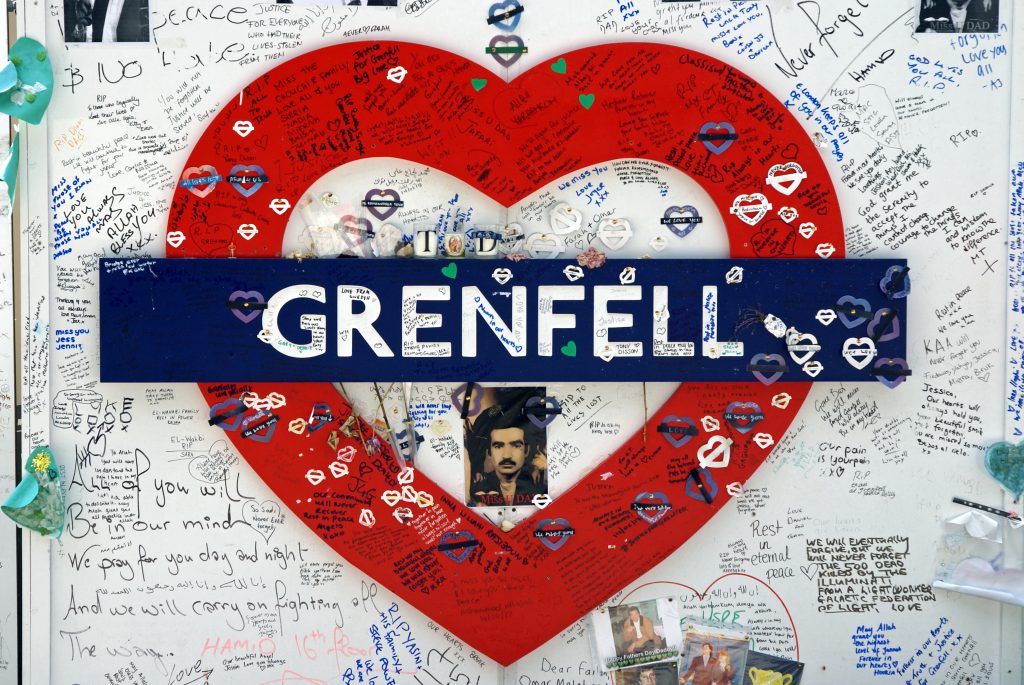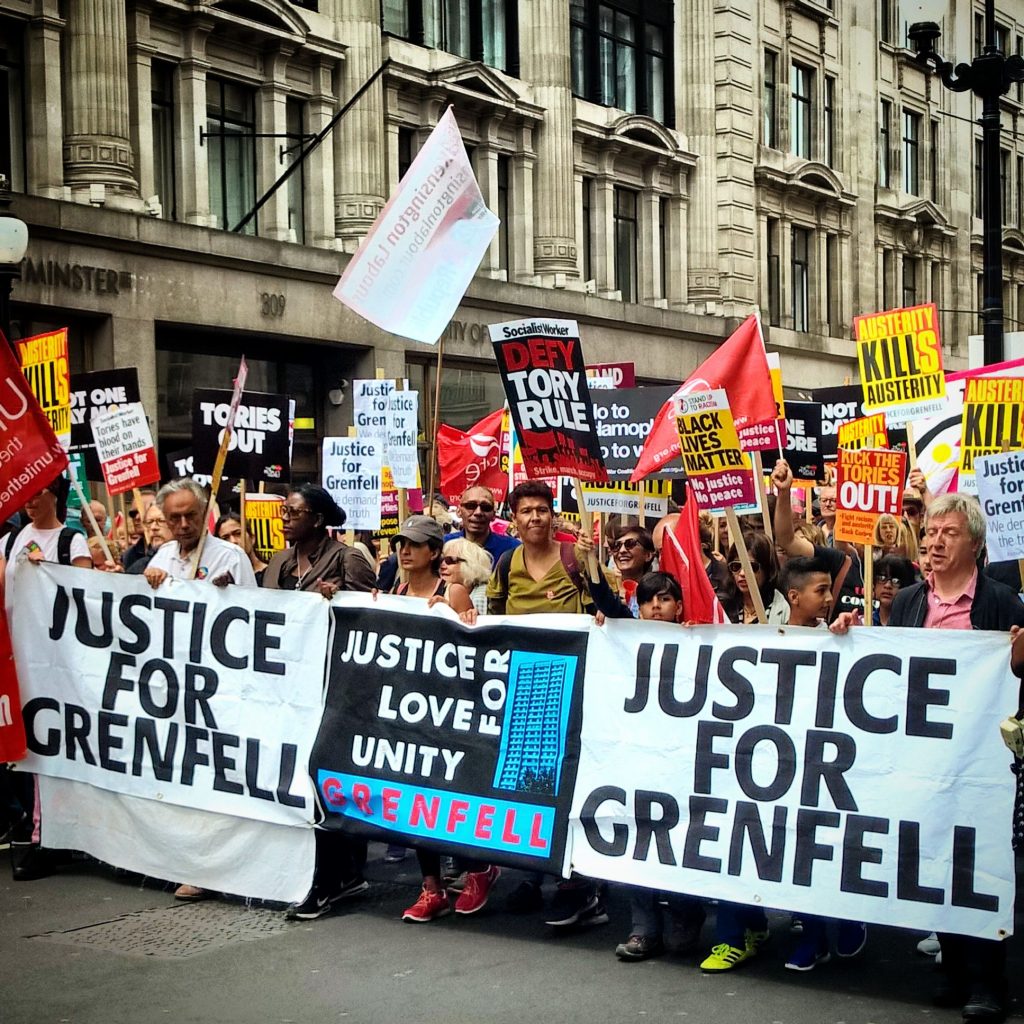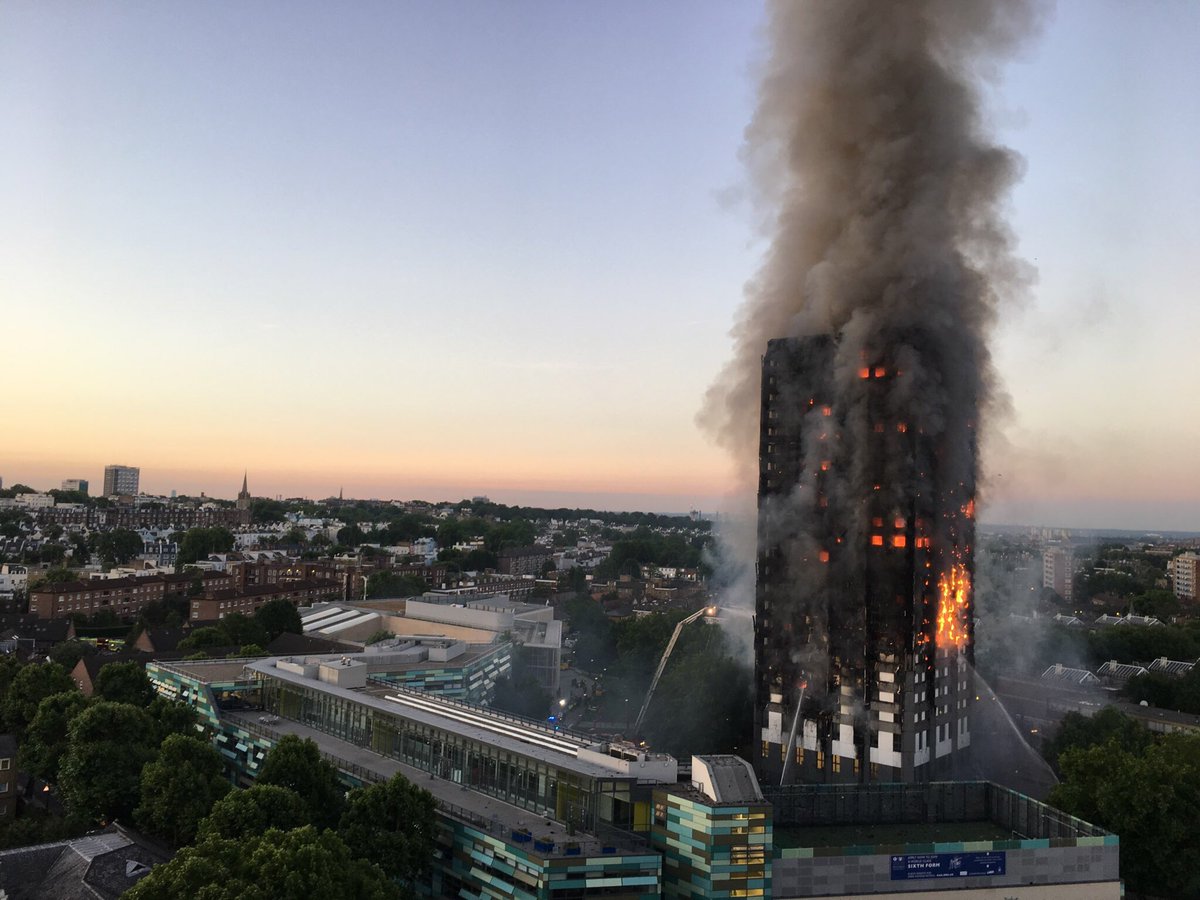Local authorities and public services failed their human rights obligations to protect life and provide safe housing, the Equality and Human Rights Commission (EHRC) have claimed in a report submitted to the Grenfell Tower Inquiry.
The watchdog also states that the UK needs to take action to protect people in more than 300 high-rise buildings across the country that continue to be wrapped in the now banned combustible cladding. It suggests that the failure to protect lives by authorities and violation of Article 2—the right to life—is continuing.
A Fundamental Failure To Meet Victims’ Needs
 Credit: Flickr/ChiralJohn
Credit: Flickr/ChiralJohn
The report highlights that authorities were presented with evidence the cladding used on Grenfell Tower was unsafe but failed to take action which could have prevented the loss of 72 lives.
“Not banning the cladding at the time, or strengthening rules for its use in the UK, breached residents’ right to life,” the watchdog says, adding that this is a fault which “lies with the authorities”.
Additionally, a further failure to protect residents’ right to life occurred through safety notices handed which were handed out to occupants.
Evidence has emerged, the report says, that the notice was only given to residents in English, a language not spoken by many Grenfell residents. This has been described as a “fundamental failure by the authorities to meet victims’ needs.”
The safety of wheelchair users, elderly and disabled people were further overlooked according to the EHRC, as vulnerable residents were housed on the top floors of the high-rise building. They claim that this was “a breach of their right to adequate housing.”
Grenfell Residents ‘Tragically Let Down’
 Activists march to in the #NotOneDayMore protests, wanting ‘Justice for Grenfell’ in July 2017
Activists march to in the #NotOneDayMore protests, wanting ‘Justice for Grenfell’ in July 2017
The report makes several recommendations as the Grenfell Inquiry moves on to its next phase. These include removing combustible cladding from hundreds of other buildings, ensuring that residents are provided with sufficient fire safety advice, and implementing new training for firefighters on combatting cladding fires.
The watchdog also wants the application of the ‘stay put’ policy for buildings with similar cladding combinations to Grenfell Tower to be reconsidered, or alternatives to be implemented.
David Isaac, Chair of the EHRC, said: “Everyone has the right to life and the right to safe, adequate housing, but the residents of Grenfell Tower were tragically let down by public bodies that had a duty to protect them.”
“It is our hope that the Grenfell Inquiry finds this information relevant and useful as they continue with their work, but we also need to see action taken by public bodies so we never see a repeat of this tragedy.”
“Some of those who witnessed the fire and lost family or friends have told us their stories and voiced their trauma. Now the Grenfell Inquiry and local authorities must ensure that these failures are addressed immediately and that the same mistakes are never repeated in future,” he adds.
Many of the issues raised demonstrate an overall lack of coordination and organisation of services in response to the fire, the Watchdog says, both in the immediate aftermath and still ongoing a year later.
They are urging the inquiry to look at addressing the issues raised in their report now, and not wait until the end of the phase 2 report in 2020.







